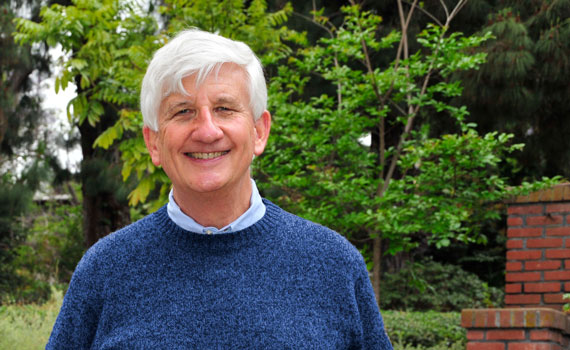|
SOHO President's Message
By David W. Goldberg
July/August 2023
 Photo by Sandé Lollis |
Since SOHO’s founding in 1969, we can all be justifiably proud of our five-plus decades of preservation achievements. The positive accomplishments and effects of preservation are visible all around us. Respect for our architectural and cultural heritage has made San Diego a better place to live, work, and visit. That said, one aspect of preservation remains an ongoing and, at times, a frustrating challenge: The need for constant vigilance to ensure that saved historic resources stay saved and that we prevent this progress from sliding backwards or being dangerously diluted.
This challenge manifests itself in many ways. Sometimes a historically important building owned by a careful steward is sold to someone who wants to demolish it, as was the case with the 1894 Irving Gill-designed Windemere Cottage in La Jolla. In other instances, governmental policies and legislation, even though they may be well intentioned, can lead to the reversal of decades of hard-won progress. SB 10, a recent piece of legislation designed to jump-start housing production throughout California, is an example.
SB 10, which allows up to 10 residential units to be built on a single lot, but San Diego adds another three so that it can be up to 13 units, poses an existential threat to the preservation of historic buildings by expediting the alteration or demolition of existing housing stock to make way for new units. SOHO successfully added language protecting historic resources to the City of San Diego’s proposed implantation of SB 10, but, unfortunately, the most recent draft heard by the Planning Commission on June 1, 2023 scaled back the protections. Without the full exemption as originally proposed (see “SB 10 Update”), we would lose a significant part of our architectural and cultural heritage, which contributes so much to the authentic character and evolving history of our city.
Historic homes and neighborhoods have a proven track record of providing affordable housing and in building a strong middle class. Owning historic dwellings has given many people, including myself, the opportunity to build financial security. SB 10, on the other hand, would drive up land prices for speculative purposes, replace owner-occupied housing with rental units, and make it even more difficult for first-time buyers to enter the housing market and reap the benefits of home ownership. This is in stark contrast to national housing policy dating back to the 1930s, which promotes and encourages owner-occupied housing. If there are examples of replacement housing that are more affordable than existing housing, I’m not aware of them.
Moreover, the preservation and restoration of historic structures has led to the renaissance of historic neighborhoods throughout San Diego. It wasn’t very many years ago when older neighborhoods, especially those south of Interstate 8, were in decline and considered less than desirable places to live. Banks and savings and loans were reluctant to make mortgage loans in these areas. Burlingame and University Heights, for example, were shunned for drug activity. Not anymore. The remarkable turnaround of our historic neighborhoods has been an enormous success story, immensely benefiting our city economically, socially, and culturally. Preservation works.
SB 10, on the other hand, is untested legislation. There is no legal requirement for a city to adopt it. Strikingly, San Diego is currently the only city in California considering opting in. Once adopted, there is no turning back. SB 10’s terms can never be undone, a fatal flaw written into the bill itself. Future City Councils would be precluded from making changes or modifications. Meanwhile, no provision has been made for intensive development’s typical need for infrastructure repairs or upgrades. San Diego officials have a history of making costly miscalculations, which taxpayers are on the hook for. This pattern should give us all serious pause. We must do better at protecting local autonomy and our shared architectural and cultural heritage, while adding much-needed affordable housing through historic and existing buildings’ adaptive reuse.
|
2025
2024
2023
2022
2021
2020
2019
2018
2017
2016
2015
|




